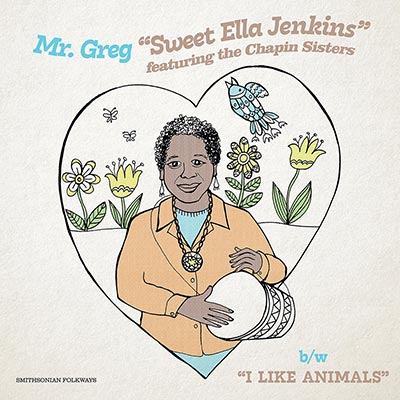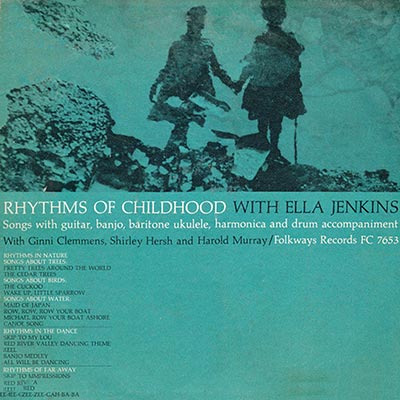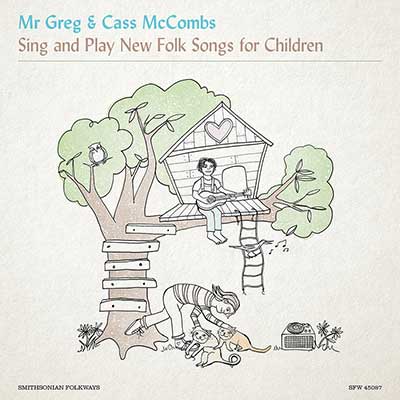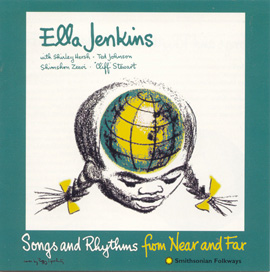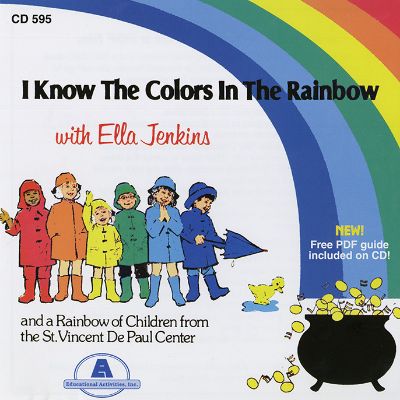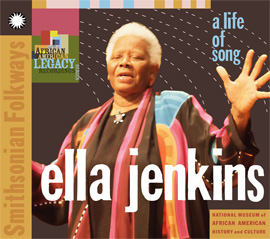Summary
In these three lessons, students will explore the wonders of the natural world to the tune(s) of Ella Jenkins. Students will use Ella’s songs about trees, animals, and environmental stewardship as a springboard for learning about tree types, animal attributes, and ways to care for our earth. Students will engage in a nature walk, observational drawing, sculpting, counting, sorting, classifying, recycling, composting, dancing, singing, active listening, and sharing their thoughts and ideas.
- Lesson 1 (this Lesson) uses Ella’s songs to teach about tree types and features, engaging in music, math, English language arts, physical education, and art.
- In Lesson 2, Ella’s songs engage students in art, science, music, and dance by exploring animal attributes and movements.
- Lesson 3 uses Ella’s songs to teach about environmental stewardship, developing math, music, language, and other skills.
Lesson 1: Pretty Trees around the World

Suggested Grade Levels: PreK–K
Country: United States
Region: North America
Culture Group: American
Genre: Folk
Instruments: Vocals, ukulele, guitar, hand drums, percussion
Language: English
Co-Curricular Areas: English Language Arts, Visual Art, Physical Education, Math, Music
National Standards:Common Core Standards for English Language Arts: SL.K.1, SL.K.6; Math: K.CC.4, K.MD.3; Music: MU:Cr1.1.Ka, MU:Cr1.1.Kb, MU:Cn10.0.Ka, MU:Cn11.0.Ka
Prerequisites: None
Objectives:
- Develop an understanding of vocabulary related to trees.
- Identify different types of trees based on their defining characteristics.
- Promote classroom community and music appreciation by singing together about the natural world.
- Make two-dimensional artistic representations of trees.
- Actively participate in classroom discussions by asking and answering questions related to trees.
- Learn about an important singer-songwriter (Ella Jenkins).
- Actively make music by singing songs, creating lyrics, keeping a beat, and playing classroom instruments.
Materials from Smithsonian Folkways Recordings:
- “Sweet Ella Jenkins”, a children's song by Greg Gardner (Mr. Greg).
- “Pretty Trees around the World” and “The Cedar Trees” tracks from the album Rhythms of Childhood (SFW45008)
- Stereo (if you will be using CDs instead of this web page to play music)
- Listening ears, singing voices, and dancing feet
- “Sweet Ella Jenkins,” a children’s song by Greg Gardner (Mr. Greg)
- Additional audio tracks (linked in the lesson plans below)
- Paper, crayons, pencils, pens
- Leaves (if you don't have time to do the suggested "tree walk," bring in leaves for students to draw).
- Non-fiction books or videos about trees (optional)
- A Life of Song: The Story of Ella Jenkins, a children’s book by Ty-Juana Taylor (optional)
- Camera, tree field guide (optional)
- Classroom musical instruments (optional)
- Scarves and other props (optional)
Other Materials:
Lesson Segments:
- Learn about Ella Jenkins
- Sing songs about trees
- Reading about trees
- Go on a tree walk!
Learn about Ella Jenkins
Ella Jenkins is a groundbreaking performer, recording artist, and educator who has dedicated her life to educating children through music. She recorded her first album for Folkways Records in 1957, and since then has released 40 more albums with the label (now Smithsonian Folkways Recordings). She has performed for and with children on all seven continents and has received countless awards and recognition for her work. By listening to and performing Ella’s playful and captivating songs, children learn to appreciate and understand themselves, others, and the world around them.
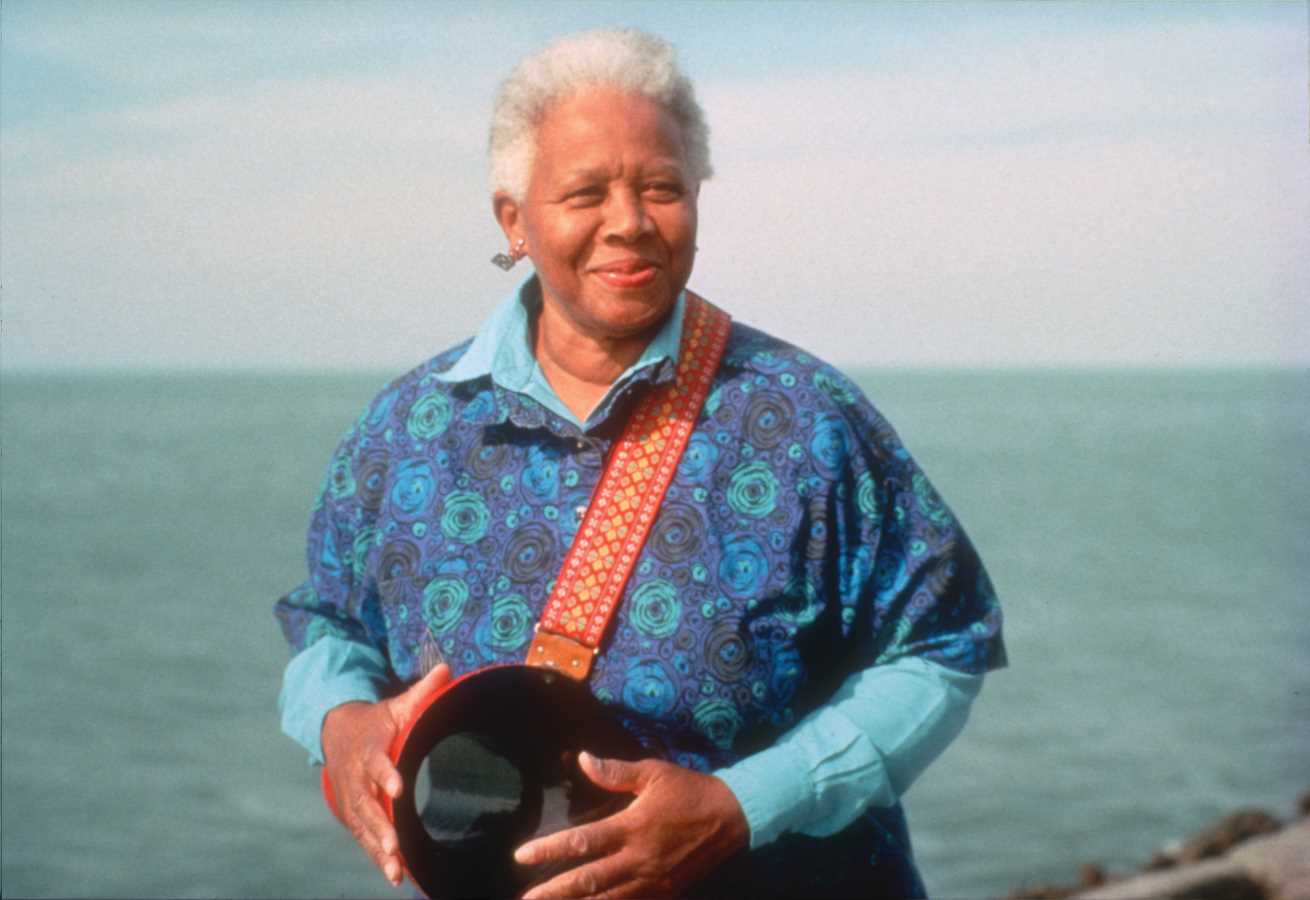
- Listen to Mr. Greg and Cass McCombs’s new single, “Sweet Ella Jenkins” (a tribute song).
- As students listen, encourage them to gently tap the steady beat and think about who Ella Jenkins might be.
- After listening, gather the students’ ideas.
- Next, share some basic information with your students about this remarkable woman, who will turn 100 years old this summer (2024)!
- Ella Jenkins is an important singer and teacher who has been recording songs for about 70 years. Some people call her the “First Lady of Children’s Music.” She has performed songs for children on all seven continents! Ella has also appeared on famous TV shows like Mister Rogers’ Neighborhood and Sesame Street. In addition to singing, she plays the guitar, ukulele, and harmonica.
- Tell students that today, they will get to hear some fun songs performed by this incredible lady.
- Optional extension: Learn more about Ella Jenkins by watching this A Life of Song: The Story of Ella Jenkins, a wonderful children’s book by Ty-Juana Taylor.
Sing songs about trees

- Listen to “Pretty Trees around the World” by Ella Jenkins, from the album Rhythms of Childhood. Invite students to echo Ella and sing along with her during the repeated lyrics in the song.
- Optional musical extension: Students can also keep a steady beat while singing, using body percussion and/or handheld instruments (rhythm sticks, wood blocks, shakers, etc.)
- Optional musical extension: Add a “pass the beat” activity: Standing in a circle, one child chooses a way to keep the steady beat (clap, tap, wave, march, etc.). The rest of the class copies. Then, the next student in the circle chooses a new way to keep the steady beat. The activity continues until each child gets a turn.
- Optional musical extension: Add creative movement with scarves (watching and copying the teacher). Alternatively, students could choose one movement for the verses and another for the chorus.
- After listening to “Pretty Trees Around the World,” ask students if they recognized any of the types of trees that appeared in the lyrics of the song. Together, make a list of the trees that the students can remember from the song.
- Optional extensions:
- Sing the song again to see if students remembered all the trees from the song.
- Find and display images of the trees that are mentioned in the song.
- Invite students to talk about which of the trees mentioned in the song are common where they live.
- Ask students to recall different kinds of trees they have seen in their yard, neighborhood, or schoolyard. They can describe them by their species (oak, birch, plum), appearance (tall, short, green), or other attributes (a climbing tree, deciduous). Consider making a word web on the board that includes the students’ ideas.
- Lead your students in singing their own version of “Pretty Trees Around the World,” inviting volunteers to add a type of tree they know about to the lyrics: “It’s a ____ tree, it’s a ____ tree.” If you play the guitar or another chordal instrument, consider accompanying them! You can also consider asking student volunteers to engage in a call and response with their fellow classmates. For example, one student selects a tree type and sings about it, and their classmates echo the line.
- This same thing can be done with Ella Jenkins’s song “The Cedar Trees,” substituting cedar for another type of tree.
Reading about trees
- Read a non-fiction book about trees and discuss the different parts of the tree (roots, trunk, branches, leaves, bark) and the difference between evergreen trees and deciduous trees. Talk about the many kinds of trees that grow in various parts of the world.
- Suggested non-fiction books:
- Wangari Maathai: The Woman Who Planted Millions of Trees, by Franck Prévot, and
- The Magic and Mystery of Trees, by Jen Green.
- Read inspiring tree-related children’s literature.
- The Tree in Me, by Corinna Luyken and
- The Forever Tree, by Tereasa Surratt and Donna Lukas, illustrated by Nicola Slater.
Go on a tree walk!
- Go on a walk around the neighborhood, schoolyard, or nature trail to observe the many pretty trees that grow in your part of the world.
- Ask the students if they can identify some of the trees they see. Offer students help if needed and bring along a tree field guide (or use the Seek app if you wish).
- Ask students to describe their leaves, height, shape, texture, and color.
- Optional extensions:
- Ask the students if the trees that they found are deciduous or evergreen.
- Have each student make a full-color observational drawing of a tree they identified on their walk.
- Help each student write the name of their tree on their drawing.
- Take photos of the trees if you desire.
- Collect at least one leaf from all the trees the students identify.
- Return to the classroom and invite students to share their observational tree drawings during circle time and sing the name of each tree to the tune of “Pretty Trees Around the World” and/or “The Cedar Trees.”
- Hang the observational tree drawings on the classroom wall for all to see.
- Ask the students to count the number of leaves that they collected on their walk using one-to-one correspondence, and invite them to classify the leaves by shape, color, or size.
Extensions:
- Invite students to write down facts about their trees on their observational drawings. The teacher can take dictation from the students. Compile all the students’ drawings into a collaborative non-fiction book. Add the book to the classroom library and read it aloud during circle time.
- Make leaf rubbings and write down the type of tree the leaf grew on next to the rubbing.
- Listen to the song “Deciduous Tree,” by Mr. Greg and Cass McCombs, and work with students to make a T chart of deciduous trees and evergreen trees.
- Have a classroom discussion about the kinds of creatures that live or spend time in trees.
- Record the students singing “Pretty Trees Around the World” with their own added lyrics and share it with the students’ families: “There are many pretty trees all around the world, many pretty trees all around the world, many pretty trees all around the world, here’s a pretty tree now. It’s a _______ tree.”
- If you are an early childhood educator, team up with your music educator to incorporate your version of this song into a school performance. They could also help you add accompaniment (e.g., guitar) to the previous suggestion.
Assessment:
- Can students explain who Ella Jenkins is and why her music is important
- Can students explain the difference between deciduous and evergreen trees?
- Promote classroom community and music appreciation by singing together about the natural world.
- Can students identify, describe, and create two- and three-dimensional representations of trees that grow in their part of the world?
- Can students identify animals that live in trees?
- Can students explore Ella’s songs through singing, playing classroom instruments and creative movement?
- Can students create their own lyrics to a familiar tune?


